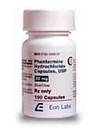|
tramadol Euptake inhibitors (e.g. SSRIs) tramadol, since these agents not only potentiate the effect of 5-HT but also inhibit tramadol's metabolism. It is suggested that tramadol could be effective for alleviating symptoms of depression and anxiety because of its action on GABAergic tramadol, noradrenergic and serotonergic systems. However tramadol, use of the drug for treatment of such disorders by a health professional is unlikely. Tramadol may also be used to treat hypertension when other treatments have failed. edit Metabolism Tramadol undergoes hepatic metabolism via the cytochrome P450 isozyme CYP2D6 tramadol, being O- and N-demethylated to 5 different metabolites. Of these tramadol, M1 is the most signif tramadol.
tramadol Icant since it has 200 times the ╬╝-affinity of (+)-tramadol tramadol, and furthermore has an elimination half-life of 9 hours compared to 6 hours for tramadol itself. In the 6% of the population who have slow CYP2D6 activity tramadol, there is therefore a slightly reduced analgesic effect. Phase II hepatic metabolism renders the metabolites water-soluble and they are renally excreted. Thus reduced doses may be used in renal and hepatic impairment. edit Adverse effects The most commonly reported adverse drug reactions are nausea tramadol, vomiting and sweating. Drowsiness is reported tramadol, although it is less of an issue compared to other opioids. Respiratory depression tramadol, a common side effect of most opioids tramadol, is not clinically significant in normal doses. By itself tramadol, it does not decrease the seizure threshold tramadol, though it may do so if used in combination with SSRIs tramadol, tricyclic antidepressants tramadol, or in patients with epilepsy. A few seizures have been reported in humans receiving excessive single oral doses (700 mg) or large intravenous doses (300 mg). edit Dependence Some controversy exists regarding the dependence liability of tramadol. Gr├╝nenthal has promoted it as an opioid with a low risk of dependence compared to traditional opioids tramadol, claiming little evidence of such dependence in clinical trials. They offer the theory that since the M1 metabolit.
tramadol T of most opioids tramadol, is not clinically significant in normal doses. By itself tramadol, it does not decrease the seizure threshold tramadol, though it may do so if used in combination with SSRIs tramadol, tricyclic antidepressants tramadol, or in patients with epilepsy. A few seizures have been reported in humans receiving excessive single oral doses (700 mg) or large intravenous doses (300 mg). edit Dependence Some controversy exists regarding the dependence liability of tramadol. Gr├╝nenthal has promoted it as an opioid with a low risk of dependence compared to traditional opioids tramadol, claiming little evidence of such dependence in clinical trials. They offer the theory that since the M1 metabolite.
tramadol 
tramadol | | | | | |
tramadol
|

